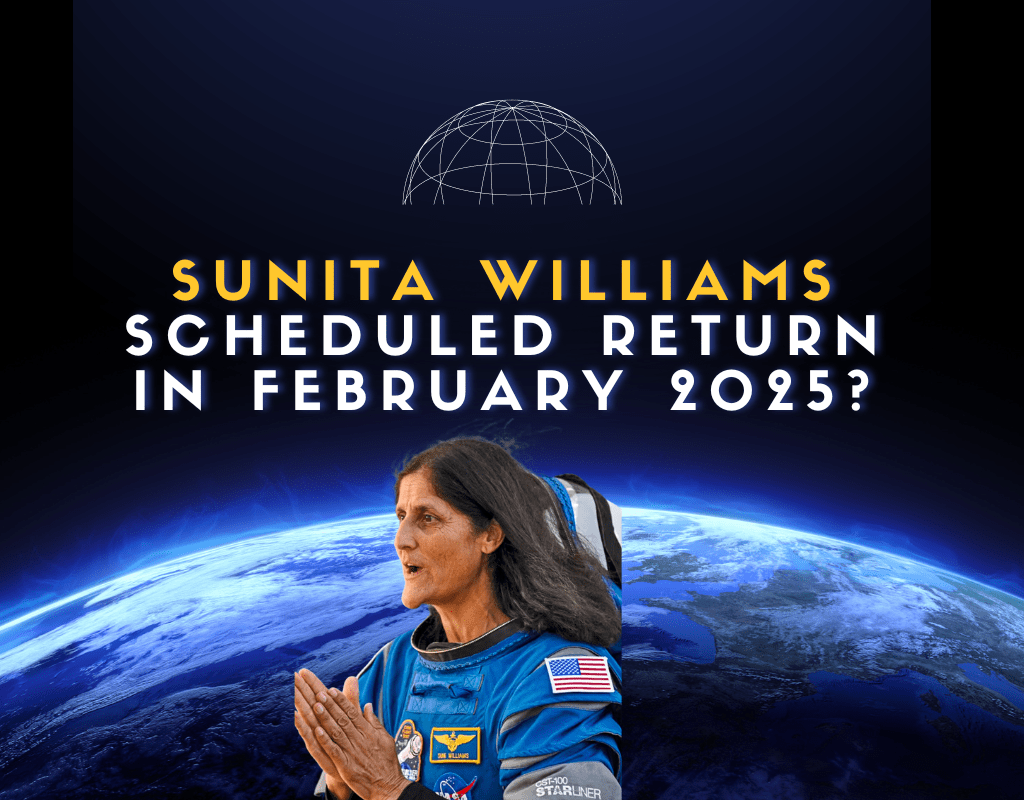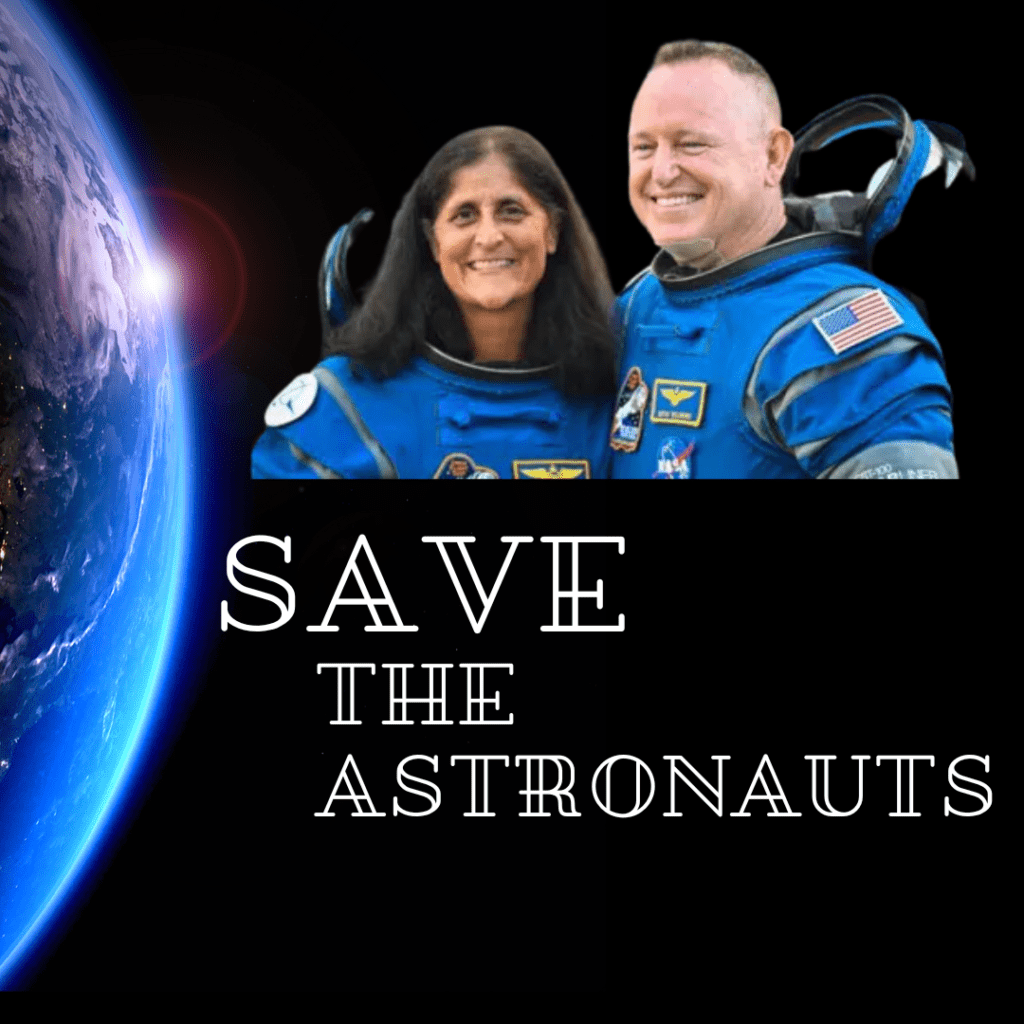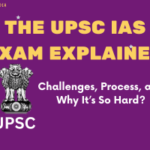
Sunita Williams Scheduled Return in February 2025
Sunita Williams Scheduled Return in February 2025?
In NASA’s recent mission to the International Space Station (ISS), there has been much buzz about the extended, risky stay for the American Astronaut of Indian origin, Sunita Williams. The mission, which was supposed to be an 8-day expedition, is now reported to return in 2025. Williams, with astronaut Butch Wilmore took off for the mission on 5th June 2024. The two were sent to the ISS by Boeing’s Starliner, but now that the return journey is being deemed unsafe via the Starliner, they might return in February 2025 via SpaceX crew Dragon.
The mission and the problem it faces
The mission set out on June 5, 2024, was primarily to test the Boeing Starliner ship’s capacity to help astronauts safely make a round trip from the ISS, including its station docking and other necessary functions. The mission was to access Starliner’s future reliability for future missions, but due to technical difficulties, the mission stands at a troubled point, where NASA now finds two of its astronauts stuck at the station along with other astronauts in the ISS.
The issue occurred with the service model of the Starliner. Helium leaks were reported, and issues with the valve responsible for regulating the flow of oxidizers were found. Though the Starliner cannot bring the two astronauts back, the mission is still a success because it has provided the organization with essential data on how to improve the ship for future missions and make space travel to ISS safe and regular for humans.

Food and other life essentials for the next six months
NASA has confirmed that the astronauts aboard the ISS are not in immediate danger and have enough supplies to last for the extended stay. The station usually maintains four months of food and water reserves. Recently, two spacecraft delivered additional supplies, including 8,200 pounds of food, fuel, and other essentials, and 3 tons of cargo. The ISS also has systems to produce oxygen and manage waste.
The problem that remains is space at the ISS. The ISS is as big as a big 7-bedroom house, but a lot of space is taken up by the goods and other equipment necessary at the space station. While being with other people, the life management system at the state with regard to water and air purification and management would have to be taken care of. The situation might become a test for the space station to work at an optimum capacity for the unplanned stay of two more people within its premises.
NASA, however, has replied to this speculation, saying that the astronauts have everything that is required for them to sustain themselves at the station except for their personal clothes.
The space organisation chose to remove the astronauts’ luggage from the spacecraft to make space for a crucial pump needed to repair a faulty toilet on the ISS.Despite the lack of personal belongings, the astronauts have sufficient underwear, socks, T-shirts, and other clothing items on board.
What would the astronauts do for 6 months at the space station?
NASA has announced that the two astronauts will smoothly join Expedition 71, the current crew of seven astronauts on the ISS. They will be responsible for various tasks, including spacewalks, maintaining the space station, and conducting scientific experiments.
The trained, experienced astronauts, as it seems, have already fallen into their daily schedules and are smoothly carrying out their daily life at the station, making the most of the unexpected situation.
When asked about the sudden, unexpected situation and the safe return in 2025, NASA administrator Bill Nelson said, “A test flight, by nature, is neither safe nor routine”, adding that “Space flight is risky even at its safest and even at its most routine”. He insisted that their priority is the safety of their crew at the station.
Concerns about the health of the astronauts onboard the station
Medical experts are concerned about the potential health risks associated with prolonged International Space Station (ISS) stays. One of the most significant concerns is the rapid decline in both muscle mass and bone density, a condition similar to osteoporosis.
When astronauts are in space, they are not subjected to the constant pull of Earth’s gravity. This lack of gravity can lead to muscle atrophy, as the muscles do not need to work as hard to maintain posture or perform daily activities. Over time, this can result in a significant loss of muscle mass, making it difficult for astronauts to move around and perform tasks.
In addition to muscle loss, astronauts also experience a significant decrease in bone density. Without the constant stress of gravity on their bones, they can lose up to 1% of bone mass per month. This bone loss can increase the risk of fractures, especially during re-entry or other activities involving sudden acceleration changes.
To combat these health risks, NASA and other space agencies are researching to develop countermeasures to help astronauts maintain their physical health during long-duration space missions. These countermeasures may include exercise regimens, nutritional supplements, and the use of artificial gravity devices.
Sunita William’s family on the situation
Sunita Williams’ husband and mother did not seem to be as worried about her extended stay in space. When asked about it, her husband, Micheal J Williams, was quoted saying that the station is her “happy place”.
Her mother told the reporters, “I don’t give her any advice. She knows what to do. She is a seasoned astronaut. She’s been up for over 400 days in space”. She even had a conversation with her daughter a few days back when Williams assured her that everything was going to be fine and she shouldn’t worry about her.
Can ISRO help Sunita Williams?
ISRO chief S. Somanath was asked to comment on the situation. Where he told the reporters, “Before they travelled, there were a lot of teething troubles before this spacecraft was organised for mission,” Somanath explained to HT. “After the docking was successfully completed, the evaluation of the situation on the spacecraft revealed anomalies”. He said that the situation “stuck in space” needs to be decoded to know if the astronauts can safely return to Earth.
In a recent podcast, when the chief was asked if ISRO could play a role in bringing Williams and her colleague back, he said, “Right now, we can’t do anything as a direct help. Because we don’t have a spacecraft which can go there and save her, it is not possible. The only possibilities are from Russia or the US. The US has the Crew Dragon vehicle, which can go. Russia has a Soyuz. Either of these can go and save them.” he pointed out the problems that the Starliner faced and explained the situation.

Who is Sunita Williams?
She is a renowned American astronaut with a distinguished career in space exploration. She holds the record for the most spacewalks by a woman, having completed several missions aboard the International Space Station (ISS). Her experience in spacewalks and her contributions to scientific research have made her a prominent figure in the field of astronautics.
Her parents are Indian immigrants who emigrated to the United States. While Williams was born and raised in the United States, her Indian heritage has played a significant role in her life and career. Her connection to India has continued throughout her career. Williams has visited India several times, connecting with her extended family and exploring her ancestral roots. She has also used her platform to promote cultural exchange and understanding between the United States and India.
Before her astronaut career, Williams served in the U.S. Navy, gaining skills and knowledge that would later prove invaluable in her space endeavours. Her military background gave her a strong sense of discipline and leadership as well as prompt and effective reaction to problems. Williams’s time aboard the ISS involved conducting various scientific experiments and maintaining the station’s systems. Her contributions to space research have helped advance our understanding of the universe and have laid the groundwork for future exploration.
Through her achievements and inspiring story, Sunita Williams has become a role model for aspiring astronauts and scientists worldwide. Her dedication, perseverance, and groundbreaking work have solidified her legacy as one of history’s most accomplished female astronauts.
What is the ISS?
The International Space Station (ISS) is a large spacecraft orbiting Earth. It’s a collaborative project among several countries, including the United States, Russia, Canada, Japan, and Europe. The ISS serves as a home for astronauts, a laboratory for scientific research, and a platform for various technological experiments.
The ISS is used for a wide range of scientific research, including biology, medicine, physics, and Earth observation. Its location in space provides a unique environment for conducting experiments that are not possible on Earth.
The ISS is approximately the size of a football field and orbits Earth at an altitude of about 250 miles. It is continuously occupied by astronauts from different countries, who live and work on the station for extended periods of time.
It is one of humans’ most valuable and appreciated contributions in terms of space exploration and a possible safe human territory in space.
What are the longest stays in the ISS?
- Mark Vande Hei (United States): 355 days
- Scott Kelly (United States): 340 days
- Mikhail Kornienko (Russia): 340 days
- Sergei Prokopyev (Russia): 340 days
- Dmitry Petelín (Russia): 340 days
Sunita Williams’s longest stay earlier was noted to be 195 days during expedition 14/15, where she served as a flight engineer and later the station commander.
Written by – ANJALI MITTAL
World’s 7 biggest financial scams that burnt Investor’s money till its teeth, CLICK HERE
Join IPI membership and get exclusive benefits for free- JOIN NOW
Subscribe INSIDE PRESS INDIA for more

Sunita WilliamsSunita WilliamsSunita WilliamsSunita WilliamsSunita WilliamsSunita WilliamsSunita WilliamsSunita WilliamsSunita WilliamsSunita WilliamsSunita WilliamsSunita WilliamsSunita WilliamsSunita WilliamsSunita WilliamsSunita WilliamsSunita WilliamsSunita WilliamsSunita Williams
What did Sunita Williams’ family say on her extended stay at the ISS?
Sunita Williams’ husband and mother did not seem to be as worried about her extended stay in space. When asked about it, her husband, Micheal J Williams, was quoted saying that the station is her “happy place”.
Her mother told the reporters, “I don’t give her any advice. She knows what to do. She is a seasoned astronaut. She’s been up for over 400 days in space”. She even had a conversation with her daughter a few days back when Williams assured her that everything was going to be fine and she shouldn’t worry about her
Can ISRO help Sunita Williams return?
In a recent podcast, when the chief was asked if ISRO could play a role in bringing Williams and her colleague back, he said, “Right now, we can’t do anything as a direct help. Because we don’t have a spacecraft which can go there and save her, it is not possible. The only possibilities are from Russia or the US. The US has the Crew Dragon vehicle, which can go. Russia has a Soyuz. Either of these can go and save them.” he pointed out the problems that the Starliner faced and explained the situation.
Who is Sunita Williams?
She is a renowned American astronaut with a distinguished career in space exploration. She holds the record for the most spacewalks by a woman, having completed several missions aboard the International Space Station (ISS). Her experience in spacewalks and her contributions to scientific research have made her a prominent figure in the field of astronautics.Her parents are Indian immigrants who emigrated to the United States.
What are the longest stays at the ISS?
Mark Vande Hei (United States): 355 days
Scott Kelly (United States): 340 days
Mikhail Kornienko (Russia): 340 days
Sergei Prokopyev (Russia): 340 days
Dmitry Petelín (Russia): 340 days







